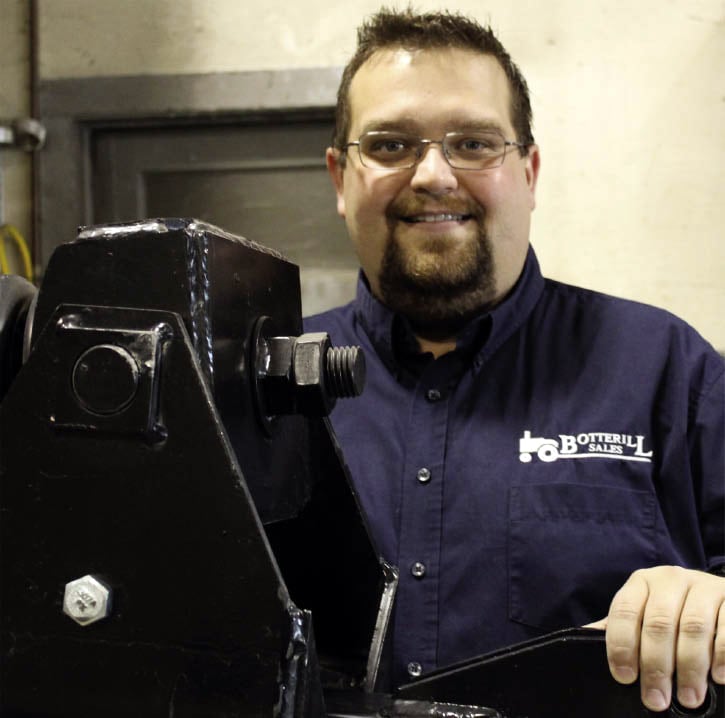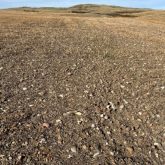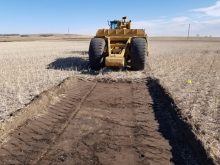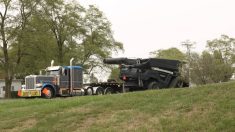Strip till is becoming a common practice through much of the U.S. corn belt, especially in Highly Erodable Land (or HEL ground) areas where the U.S. National Resources Conservation Service (NRCS) has strict guidelines against working the full width of the seedbed.
Many wonder if this practice can be transferred to Western Canada, especially with the growth of row crops such as corn and soybeans. Research groups have done a great job of testing strip till in plots, but we often make the mistake of looking for a higher yield to promote using the practice.
Read Also

Claas brings 1000 Series SP forage harvesters to Canada
In mid-August, Claas unveiled its new line of Jaguar forage harvesters at an event in Visalia, California, deep in the heart of that state’s dairy region.
In the U.S. strip till yields are typically compared to no-till yields, with strip till typically having higher yields for crops like corn. When strip till is compared to a conventional tillage practice, more common for us in our corn growing areas, there usually isn’t a large yield difference between the two. The strip till advantage is in higher profits and better soil conservation.
To realize why you have to look at profit instead of yield, you need to understand strip tillage. A strip till bar is a unit that creates a conventionally tilled strip, about eight to 10 inches wide, leaving the rest of the seedbed untouched. Originally, strip till bars were designed to create a black strip with a one- to two-inch berm, to speed up seedbed warming and drying in the spring. Eventually farmers began banding their fertilizer into the strips at the same time. This created a one-pass primary tillage-seedbed prep-fertilizer placement pass. In one pass they were able to do what took three passes before in a conventional tillage system.
If you have what is essentially a conventionally tilled strip for the plant to grow in, to expect it to yield more than a field that is completely conventionally tilled is asking a lot. It has the same potential advantages of compaction removal, in-row fertilizer banding and a seedbed that will warm and dry quicker than straight no-till, just like a conventional tillage system can offer heat hungry crops like corn. With the unworked strips between the rows you have the ability to reduce wind and water erosion problems of conventional tillage. And it is all done in one pass. Many farmers who have switched their row crops to strip tillage have discovered as much as a 50 per cent reduction in fuel costs and machinery costs.
From the Country Guide website: The return of strip till
If you can combine a conventional tillage system into a one-pass operation, it seems like strip tillage is a no brainer right? Well, there are a couple of things to keep in mind. If you decide to go to a strip tillage system it’s important to commit to it. This seems simple enough if you’re going to invest in equipment, but in the heat of a late harvest it’s going to be hard to make sure someone is out there making the strips.
Getting the right fall conditions to make strips has been an issue for us in some years. Dry conditions can mean a rough strip with large lumps in heavier soil types. Wet conditions can cause issues with row units.
Those that switched to strip tillage have come to terms with the fact that they may have to have someone making strips while others are harvesting, if the soil conditions are right. If you are building the strips early in the fall with warm soil temperatures it may make it less advantageous to use anhydrous ammonia — you may have to look at liquid nitrogen or granular fertilizers instead.
If you’re having soil condition issues for strip till, you may be having the same issues with conventional tillage tools.
Some farmers do make their strips in the spring, as opposed to fall. In areas with drier spring conditions, making the strips right in front of the planter (sometimes with the planter directly behind the strip till bar) can help create a nice seedbed while still cutting down on erosion risks. However, for those of you looking for the maximum benefit of earlier seedbed drying and warming, a fall pass would work best.
Strip till can offer you a one-pass system to get a conventionally tilled seed bed with a dramatic reduction in erosion problems. It can offer you a dramatic reduction in fuel and overall equipment costs. You just have to decide if you have the infrastructure in place in your operation to make strip building a priority in the fall.
Todd Botterill has been in the farm machinery business since 1994, In 2009 he took over the family business, which now wholesales tillage implements across Western Canada for several different companies. He currently lives in the original family farmyard. Contact him at [email protected].














